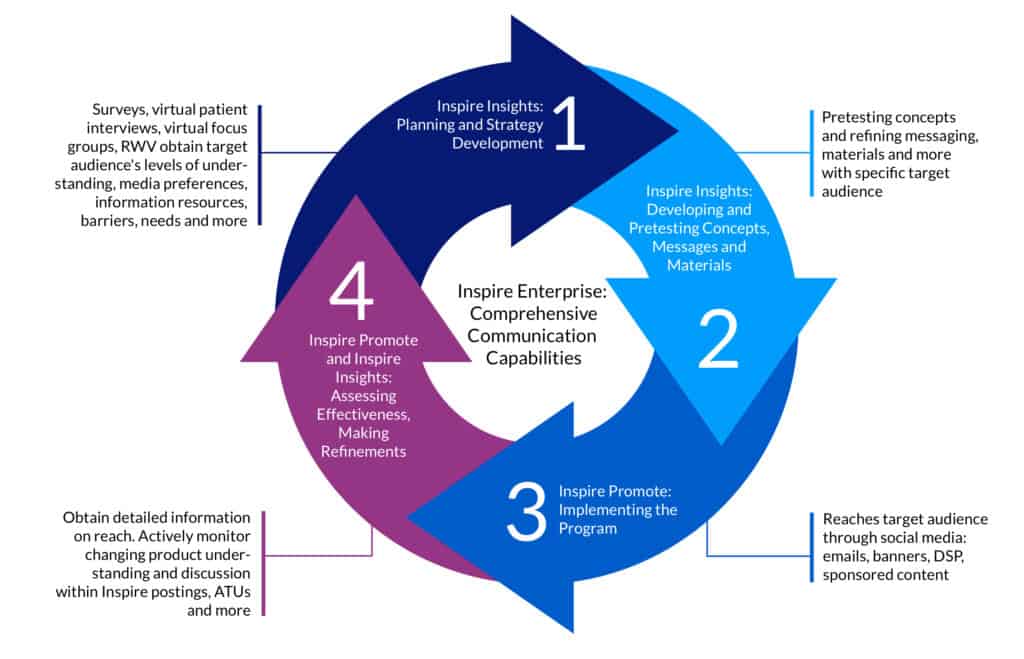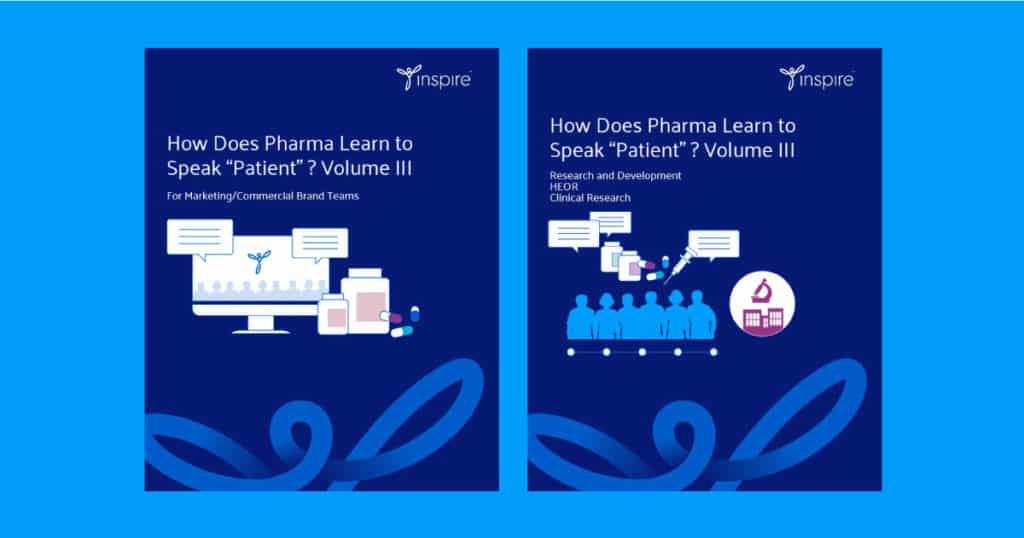Does Your Marketing Campaign Go Full Circle?

Imagine being able to learn about your audience, test your messages with that audience, directly reach your target audience and then evaluate the campaign – all in one place. It’s possible.
But let’s back up. Advertisers already understand the value of knowing their audience and testing their messages. The power of research-backed health communications is used at the federal level too in outreach campaigns. The “Pink Book” is the primer that the National Cancer Institute (NCI), Centers for Disease Control and Prevention (CDC) and all government agencies rely on. The model is a good one; robust and fact-driven. Its four stages are:
1) Planning and strategic development
2) Developing and pretesting concepts, messages, and materials
3) Implementing the program
4) Assessing effectiveness and making refinements1
Having the proficiency to do all of these steps is a challenge. This is how the Inspire implements the health communication model for clients:

First, for planning and strategy development early research into the experiences, unmet needs, and knowledge base of your audience is essential for guiding content and message development. For example, an Inspire study sought to uncover patient and caregiver support needs in rare disease communities, rather than predict them. Through grounded analysis, the study revealed unmet needs — the kind of data that is crucial for niche messaging strategy. Note, too, that the raw data was readily available, anonymized and analyzed through proven means, and yielded important contextual information. It’s one of the less expensive ways to find out if your strategy has legs.
Many marketing teams feel secure about their skills for the next phase: developing and testing concepts, messaging, and materials. But finding the specific audience segment – such as cancer patients whose condition has proven resistant to a treatment — can be difficult.
Turning to Inspire solved this problem for a client. Inspire provided access to patients with a rare form of stage IV cancer to inform a potential advertising campaign. The client tested the design, imagery and messaging of different ad concepts to reveal which concepts motivated action. Repeated testing well before launch provides opportunities to adjust messaging with the real audience.
The next stage is implementation in your audience’s environment: Social media. Motivated people are looking for health resources and peer relationships inside Internet-based health communities.
Then, media agencies and pharmaceutical marketing teams need a consistent performer in the digital advertising space. Independent research identified Inspire in both 2018 and 2020 as having superior audience quality as compared to our competitors in reaching both the target audience and an important subsegment. The cost of reaching the targeted audience was lower than any of the other media partners.
More importantly, Inspire audience members are highly receptive to promotional content. Our breast cancer community, with 34,000 registered members, has an opt-in rate of 83% for promotional offers. For all campaigns, Inspire Promote™ allows companies and organizations to engage with the patients at the core of each community, with customized campaigns using highly targeted, condition-specific marketing tools such as banner ads, sponsored content, targeted custom emails, and Active Summary Email Banner Advertising.
But launch is not the end of the health communications model. The final phase is evaluation and improvement. It emphasizes follow-up research using speedy pulse surveys, continuous ATUs or real world voice analysis of patients’ online communication to track the success of the messaging and to make adjustments. Here, too, Inspire offers expertise in follow-on research.
Inspire’s integrated capabilities support the NCI’s full model of effective health communications: Researching a patient’s real world needs, crafting and testing a resonant message, promoting in a disease-focused health community, and continuing evidence-based campaigns with outcome studies.The result? The gold standard of effective health communications and pharmaceutical commercial marketing campaigns.
Inspire offers a trusted community to patients and caregivers. Our goal with this blog, this website and our content is to provide the life science industry access to the true, authentic patient voice. In so doing, we support faithful operationalization of patient-centricity. Take a look at our case studies, eBooks and news outlet coverage.
References:
1Making Health Communication Programs Work. U.S. DEPARTMENT OF HEALTH & HUMAN SERVICES
Public Health Service, National Institutes of Health, National Cancer Institute https://www.cancer.gov/publications/health-communication/pink-book.pdf






